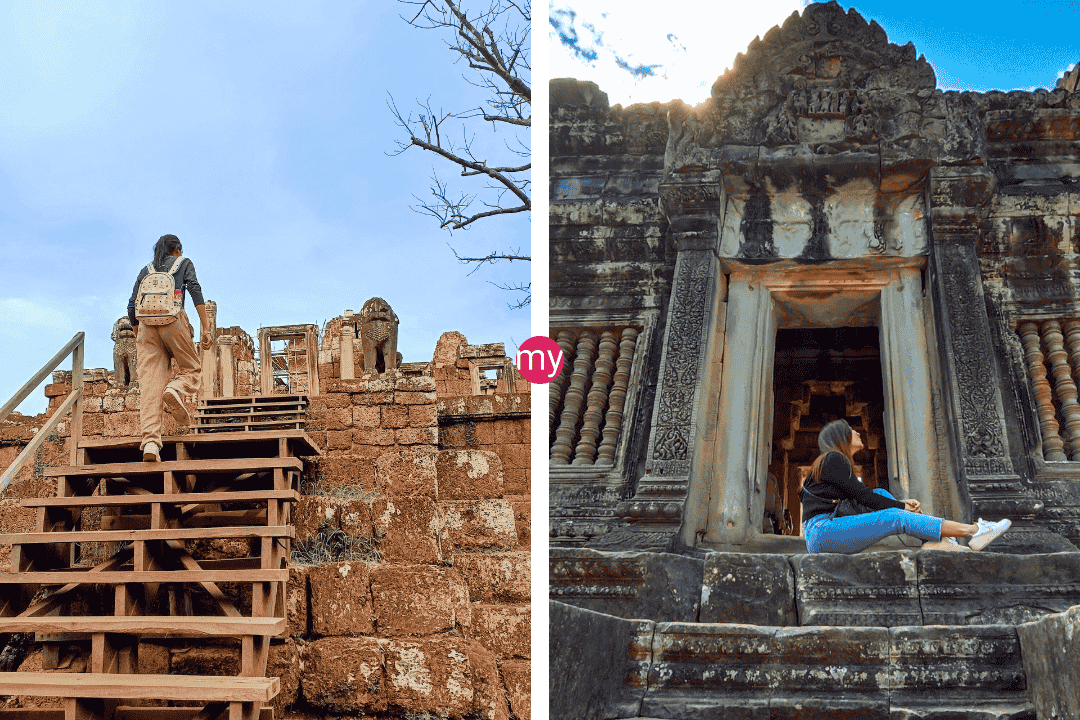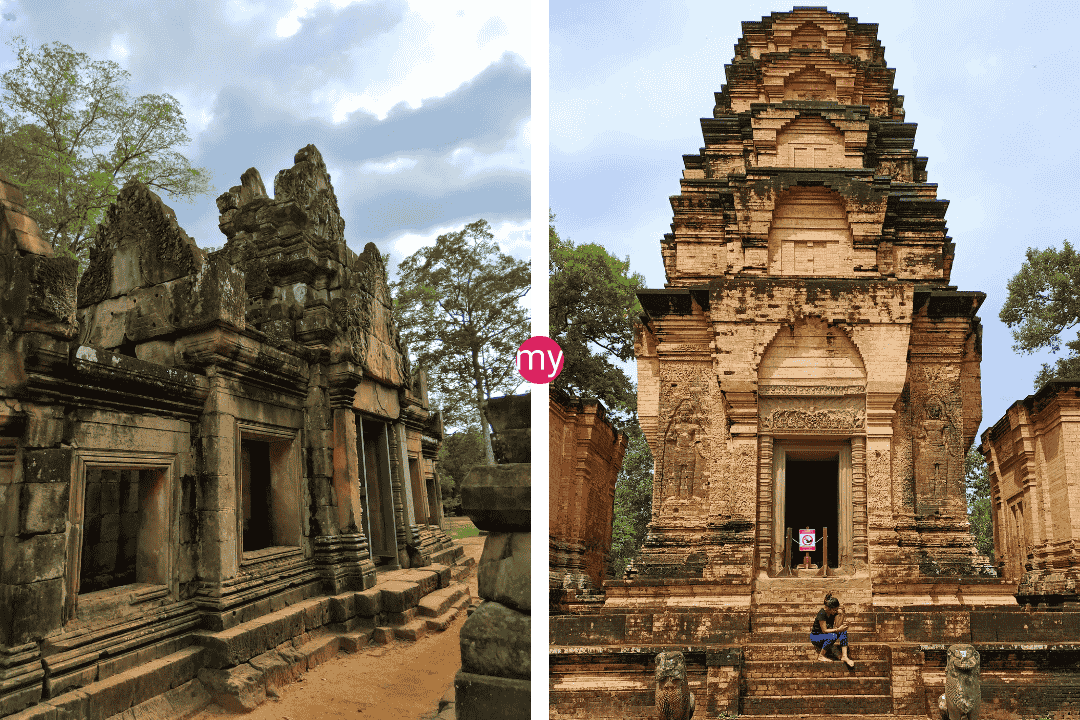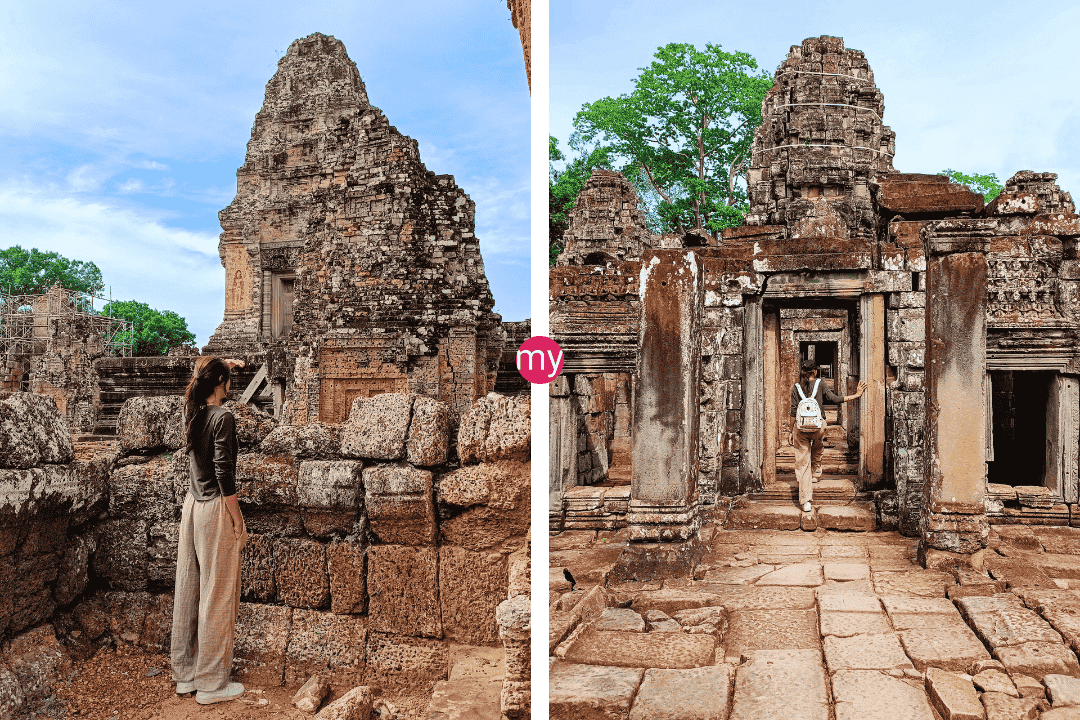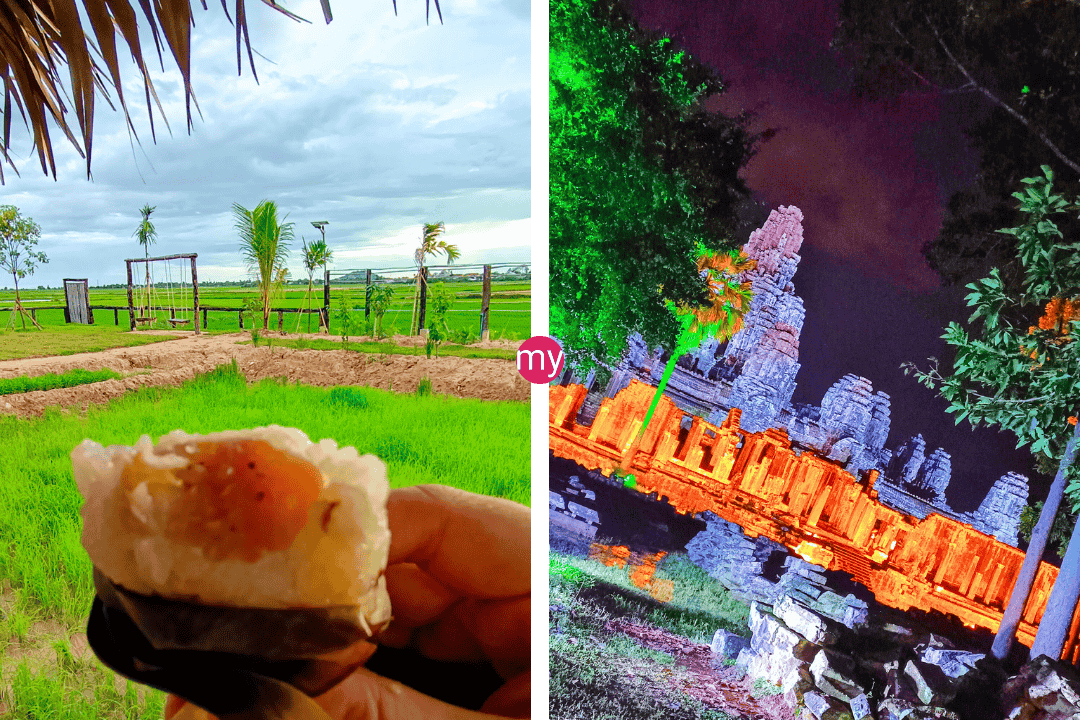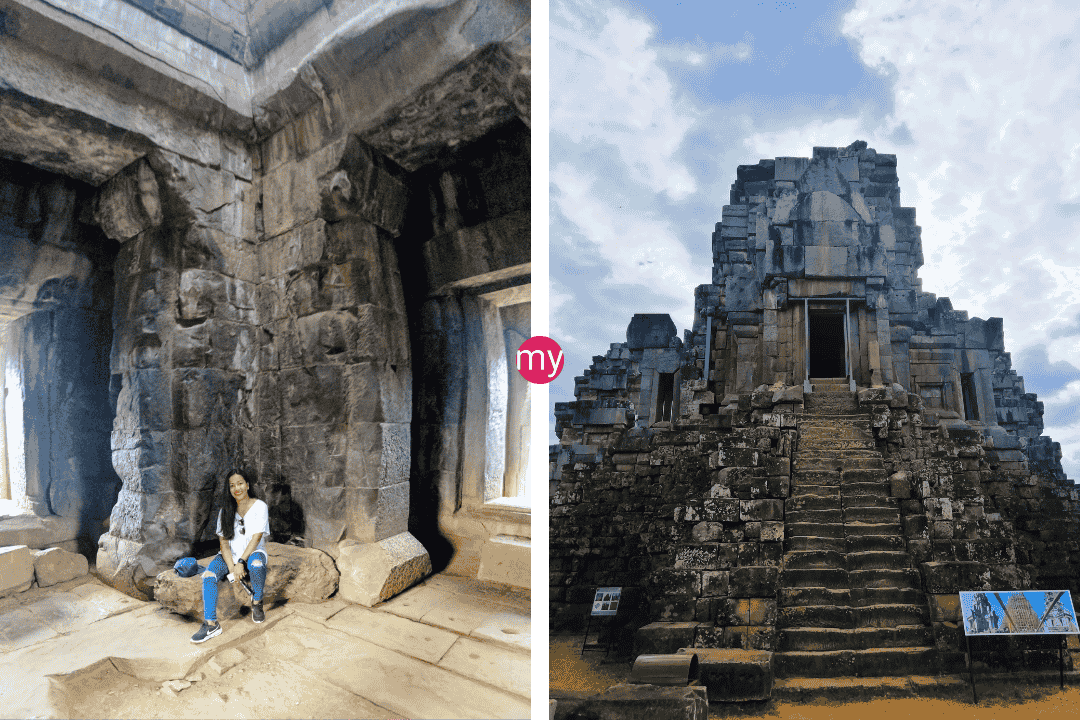The Spiritual Practices of Buddhism and Hinduism in Siem Reap
The spiritual traditions of Buddhism and Hinduism are firmly ingrained in the everyday lives of the people who live in Siem Reap, even beyond the city’s many temples. In this article, we will investigate how Buddhism and Hinduism intersect with daily life in Siem Reap, as well as how these religions impact the lives of the people who live there.
The Part That Buddhism Plays in Everyday Life In Siem Reap, Buddhist beliefs and practices are widely followed, making the religion an essential component of daily life alongside Hinduism.
The following is a list of the ways in which Buddhist teachings are applicable to everyday life:
Monks and Merit-Making: The community holds high regard for monks and recognizes the vital part they play in the lives of its members.
They start their day by going out into the community with their bowls of food to show their gratitude. The people give it to them. It is thought that this deed will bring the giver happiness and good fortune in the future.
Meditation is widely practiced in Siem Reap, with many people doing so on a regular basis in an effort to discover a sense of inner peace and tranquillity for themselves. The city is home to a number of meditation facilities and retreats, many of which provide instruction in the form of classes geared toward both novice and seasoned practitioners.
Points of Contact Between Hinduism and Everyday Life
Even though Hinduism is not the predominant religion in Cambodia, it has a significant impact on the day-to-day lives of the people living in Siem Reap.
The following is a list of the various ways in which Hinduism is relevant to everyday life:
Diwali Celebration: In Siem Reap, the Hindu holiday of Diwali, sometimes called the “Festival of Lights,” is observed by locals and tourists alike. People all over the world will light candles and lamps in their homes and temples during this time of year to represent the triumph of good over evil.
The Practice of Yoga: The practice of yoga, which has its roots in the religion of Hinduism, is gaining popularity in Siem Reap. Both locals and visitors to the area can now take advantage of the proliferation of yoga studios and retreats.
Festivals and Rituals
Siem Reap is home to a long and illustrious tradition of celebrations and rites connected to both Buddhism and Hinduism.
The following is a list of some of the most important celebrations.
The New Year in Khmer: The Khmer New Year is a significant holiday in both Buddhism and Hinduism, and it is observed annually in the middle of April. People take part in a variety of events, including the flinging of water, going to the temples, and giving offerings to monks.
Pchum Ben Festival: Pchum Ben is a festival that is observed by Buddhists and takes place during the months of September and October. During this time, people go to temples to pay their respects to their ancestors and provide food to the monks.
Effects on the Way We Live: People in Siem Reap have a great sense of community, connection, and purpose in their lives because of the influence that the spiritual traditions of Buddhism and Hinduism have had on their daily lives.
Listed below are some of the ways in which these activities have an effect on day-to-day life:
The qualities of Generosity and Kindness: Giving is an essential practice in both Judaism and Christianity. It encourages others to be generous and charitable, ultimately resulting in a more compassionate and harmonious society.
People who meditate and practice yoga are better able to discover inner peace and deal with the pressures and demands of everyday life, which is beneficial to their mental and emotional health.
Both difficulties and prospects are involved. Although the spiritual practices of Buddhism and Hinduism have a remarkable impact on the lives of individuals living in Siem Reap daily, difficulties still need to be addressed.
The following is a list of some of the opportunities and challenges:
Commercialization: The increase in tourism in Siem Reap has resulted in the commercialization of Buddhist and Hindu rites.
As a result, some tourists view these rituals as nothing more than sights rather than appreciating their cultural and spiritual significance.
However, this gives a chance to educate tourists and develop a more excellent knowledge and appreciation of these customs, which will hopefully foster respect and cultural interchange.
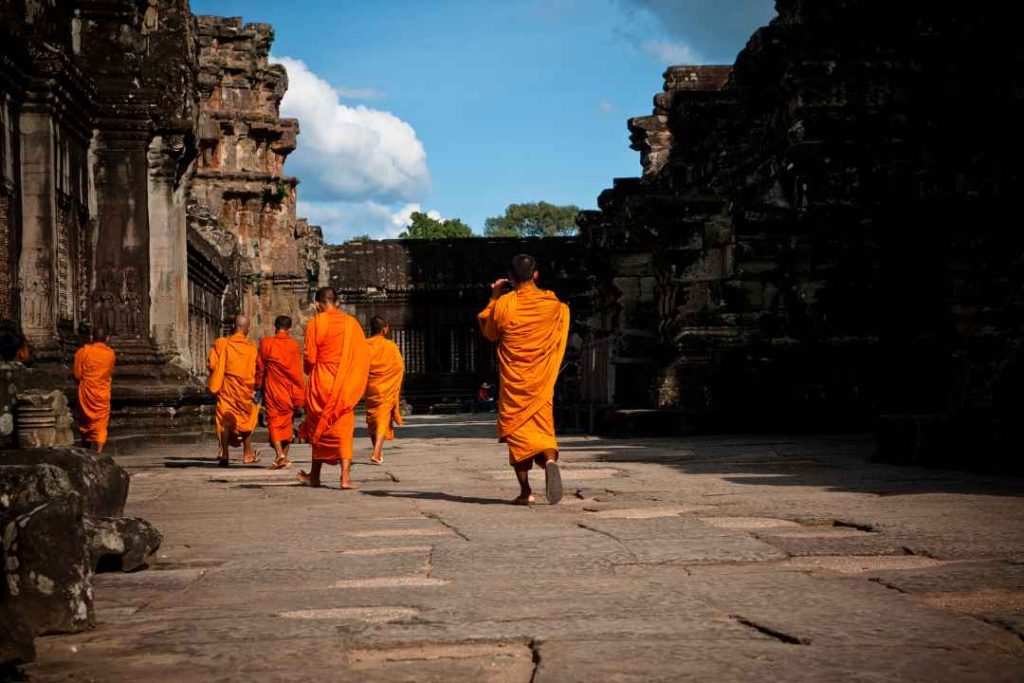
Organize Your Trip to See the Temples of Siem Reap
If you are going to be in Siem Reap. You should make it a point to stop by each of these temples while you are there.
The following are some suggestions for when you go to see the temples:
Put on appropriate clothing: Because these are places of worship, it is essential to observe appropriate levels of modesty and decorum in one’s attire. Therefore, always remember to dress modestly and cover your shoulders and knees.
Be respectful of the traditions: It is essential to be respectful of the rituals and traditions that are observed at the temples, such as taking off your shoes before entering and avoiding directing your toes or feet toward the statues of Buddha.
Hire a guide: By engaging a local guide’s services, you will gain a more profound experience and a more in-depth comprehension of the history and culture of the temples.
An Overview of Some of Siem Reap's Most Iconic Temples
The temples in Siem Reap are not only works of architecture to be admired, but also significant cultural and religious destinations.
You shouldn’t miss out on seeing some of these world-famous temples if you get the chance:
The Wat Bo temple is a Buddhist temple that dates back to the 19th century and features complex woodwork and gorgeously painted murals.
The Wat Damnak temple was constructed in the 15th century and featured Khmer architectural styles in addition to beautiful grounds.
Wat Preah Enkosey Monastery is a Buddhist monastery that dates back to the 16th century and is known for its peaceful environment and stunning pagodas.
The Wat Svay temple is a Buddhist temple that dates back to the 16th century and features excellent carvings as well as a calm environment.
The Wat Athvear Temple is a Hindu temple that dates back to the 12th century and features magnificent stone sculptures and exciting history.
Not only are the temples in Siem Reap wonders of architecture to be marveled at, but they are also important cultural and religious sites in their own right. Because guests will have the opportunity to learn about the history, significance, and stunning artwork of the temples, their experience will indeed be unforgettable.
The temple of Wat Bo, which can be found in the center of Siem Reap, is routinely recognized as one of the most visited temples in the surrounding area.
This Buddhist temple was built in the 19th century, and the exquisite murals and intricate woodwork that adorn the interior of the building have earned it a reputation for being one of the most beautiful in the world. In addition, the blend of Buddhist and Hindu ideas may be seen throughout Cambodia in the country’s murals and carvings.
The carvings portray Hindu deities, and the murals depict stories from Buddhist literature. On the temple’s premises, guests can enjoy the serene atmosphere and breathtaking scenery that are both a part of the surrounding environment.
The Wat Damnak temple is yet another Buddhist temple in the area that you should absolutely make time to visit. It was built in the 15th century.
The temple grounds feature a lovely garden with a lotus pond, and the temple structure is constructed in accordance with the norms of Khmer architecture.
Visitors to the temple can learn about the temple’s significance in the history of Siem Reap, in addition to admiring the intricate carvings that portray Buddha’s life and teachings while there.
Those looking for a location with a higher level of tranquility will find that the Wat Preah Enkosey Monastery is an excellent option to consider.
This Buddhist monastery was constructed in the 16th century and is distinguished by the verdant environs in which it is located and the various pagodas there.
One of these pagodas is particularly spectacular due to the fact that it has five floors.
While they are at the monastery, guests are encouraged to meditate, pray, or participate in any of the other numerous religious observances that take place there.
It is highly suggested that you visit the temple of Wat Svay if you are interested in admiring some stunning sculptures and being in an atmosphere that is peaceful.
This Buddhist temple was constructed in the 16th century, and the exquisite carvings that adorn the interior of the building have helped it to gain a lot of notoriety over the years.
These carvings depict a range of Buddhist stories and teachings in intricate detail.
Furthermore, because of the tranquil atmosphere, the temple is a good spot for taking photographs and getting a general feel for the surrounding area.
The Wat Athvear Temple is a Hindu temple built in the 12th century and is known for its stunning stone carvings and rich history.
Although it is the last attraction on this list, it is undoubtedly not the least important.
The Hindu god Shiva is honored by the construction of this temple. Its carvings depict events from the Mahabharata and the Ramayana, regarded as two of the most significant epics in Hinduism.
The temple’s design is one of a kind, with a sanctuary at its heart surrounded by four shrines of lesser importance on all sides.
It is highly recommended that tourists interested in experiencing the diverse history and culture of Siem Reap visit these temples during their time in the city.
- If you want to get the most out of your trip, you should think about hiring a local guide who is familiar with the temples and can give you a more in-depth insight into the history and significance of the temples.
- You should consider doing this if you want to get the most out of your vacation. It is important to remember that you are visiting places of worship, when you are there. Therefore you should dress correctly and modestly.
- Before entering the temples, visitors are obliged to remove their shoes and put on attire that covers their shoulders and knees. Shoes must also be put away before entering the temples.
The temples in Siem Reap provide visitors with a glimpse into Cambodia’s lengthy and rich history and the country’s thriving culture. It is highly recommended that you pay a visit to these temples because they have so much to offer visitors, including intricate carvings, stunning artwork, and a peaceful atmosphere.
Do not pass up the opportunity to learn more about the significance of these architectural masterworks by investigating them and getting a better grasp of their presence.
In Siem Reap, daily life is profoundly influenced by the religious tenets of Buddhism and Hinduism; as a result, the city’s residents live their lives, think about the world around them, and communicate with one another in different ways.
These practices, which range from the simple act of giving to the more involved processes of meditation and yoga, lay the groundwork for a more compassionate, peaceful, and harmonious society.
Although there are obstacles to overcome, there are also considerable opportunities to educate people about the need to respect and comprehending traditional practices.
Make a plan to visit the temples in Siem Reap, and while you’re there, immerse yourself in the city’s diverse cultural traditions and spiritual rituals.
Is it true that the only religions practiced in Siem Reap are Buddhism and Hinduism?
Other religions, like as Islam and Christianity, are also followed by some people in Siem Reap, although their numbers pale in comparison to those of Buddhist and Hindu followers.
In what ways do individuals in Siem Reap blend the spiritual activities that they partake in on a daily basis into their normal routines?
People in Siem Reap practice yoga, meditation, and other spiritual disciplines on a daily basis, as well as take part in local festivals and religious observances.
What are some of the difficulties that the spiritual activities in Siem Reap have to contend with?
The growth of tourism has resulted in the commercialization of these activities, and unfortunately, some tourists do not respect the cultural and religious value of these practices.
In what ways do the religious tenets of Buddhism and Hinduism interact with one another in Siem Reap?
People practice both religions simultaneously in Siem Reap, which is indicative of the city’s peaceful coexistence with both of them. They honor the holidays and rites of both religions via their celebrations and participation.
Are visitors welcome to take part in these religious rites?
Yes, visitors from other countries are encouraged to take part in these rituals; however, they should do so while recognizing the significance that these rituals hold in the local culture and religion.
Why Opt for a Private Siem Reap City Tour?
Visit this page if you want to learn more information on how to book your private day tour and your Siem Reap city tour. We can integrate in the private Siem Reap city tour time to visit this famous attraction in Siem Reap.
Featured
Recent Articles
Are the stairs at the Angkor temples difficult to climb? Here’s What Most Tourists Regret Not Knowing!
What Temples Are in the Angkor Small Circuit and the Angkor Grand Circuit?
How to Find Peaceful Temples in Angkor – 12 Crowd-Free Sanctuaries That Reduce Tourist Stress by 90% in 2025 and for 2026
You can customize Your own Angkor Wat tour itinerary! BREAK FREE – Design Your Dream Angkor Wat Adventure Without Cookie-Cutter Tours!
Temple Face-Off – Bakong Temple vs Ta Keo vs Once Again, One You’ve Never Heard Of
Explore more on My Siem Reap Tours
Koh Ker and Beng Mealea guided tour | Banteay Srei temple tour semi-private guided tour | Angkor Wat Sunrise shared tour | Koh Ker and Beng Mealea guided tour | Morning Siem Reap floating village tour | Afternoon Siem Reap floating village tour | Private Angkor Wat special tour | Kulen Waterfall small group guided Tour | Private Angkor Wat mix temples photo tour
